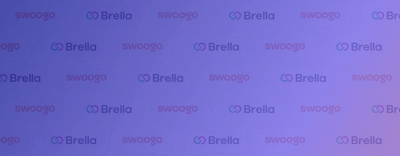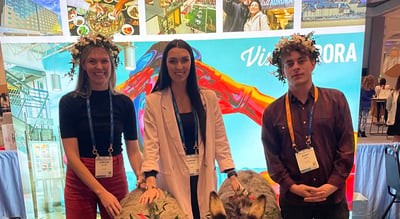The Brain Chemistry Behind Event Networking Success
When we think about event networking, we usually talk about logistics: the number of attendees, the networking tool, the meeting areas, and the agenda. But underneath all of that, what really determines whether an attendee or a sponsor walks away satisfied—or frustrated—isn’t just logistics. It’s brain chemistry.
Every interaction at an event triggers a cocktail of neurochemicals that influence how people feel, behave, and remember the experience. And here’s the kicker: your event app and networking design either amplify the “good” chemistry or accidentally trigger the “bad.” That shows up directly in your NPS, retention rates, and overall event ROI.
Let’s break it down through the four key chemicals that drive human behavior at events.
😖 Cortisol: The Stress Hormone
Cortisol spikes when people feel out of control, frustrated, or overwhelmed. Unfortunately, many event apps unknowingly create this exact state:
- Bad UX or confusing flows? Attendees struggle to find what they need, and stress levels rise.
- Meeting acceptance rates below 20%? It’s rejection after rejection. Stress compounds, motivation drops, and attendees disengage.
High cortisol leads to poor engagement and lower satisfaction. In other words: stress kills networking.
✨ Serotonin: The Confidence Boost
Serotonin is linked to feelings of stability, confidence, and safety. When attendees feel like the event is designed for them—not against them—serotonin rises.
- A smooth, intuitive app experience reassures them they’re in control.
- Smart matchmaking reduces the fear of wasted time.
- Clear communication builds trust in the process.
The result? Higher satisfaction scores and more positive word-of-mouth. People remember how you made them feel—calm, confident, and taken care of.
🚀 Dopamine: The Motivation Engine
Dopamine is the brain’s reward chemical. It fires every time we achieve something that feels valuable. For event networking, that means:
- Every accepted meeting request is a dopamine hit.
- Once acceptance rates climb above 30%, attendees don’t just feel good—they get hooked. They send more requests, schedule more meetings, and engage deeper with the app.
Dopamine creates momentum. The more wins attendees get, the more motivated they become to keep engaging.
🤝 Oxytocin: The Connection Hormone
At the end of the day, events are about people. Oxytocin, the hormone of trust and connection, is what makes those relationships stick.
- When attendees sit down face-to-face and have a meaningful conversation, oxytocin flows.
- This bonding is what transforms one-off meetings into long-term relationships, partnerships, and customer loyalty.
Oxytocin is why attendees come back the following year. It’s not just the meetings—it’s the emotional memory of belonging to a community.
Designing Events for Chemistry
If you want to boost event success, don’t just design for logistics. Design for chemistry.
- Reduce cortisol by making sure the app UX is seamless and minimizing rejection loops.
- Boost serotonin with clarity, structure, and confidence-building flows.
- Drive dopamine through high meeting acceptance rates and visible progress.
- Unlock oxytocin by creating spaces and systems where real human connection can thrive.
The right app flow and networking experience doesn’t just create meetings. It creates emotional highs that drive retention, satisfaction, and loyalty.
And when you get the chemistry right, your NPS isn’t just a number—it’s a reflection of human biology working in your favor.
Read more
- Virtual events
- Hybrid events
- In-person events
- Event sponsorship
- Event engagement
- Event matchmaking
-
Brella news
-
Brella and Swoogo Partner for Optimized Event Experiences

-
Brella wins the Best Event App in the US & Canada

- START Global partners with Brella for a world-class networking experience
- Brella co-hosts The European Startup Conference to help Ukrainian tech ecosystem
- Next Block Expo partners with Brella for a world-class networking experience
-
- Meet a Brellaneer










%20(1ff).jpg?height=100&name=Brella_1%20(1)%20(1ff).jpg)



